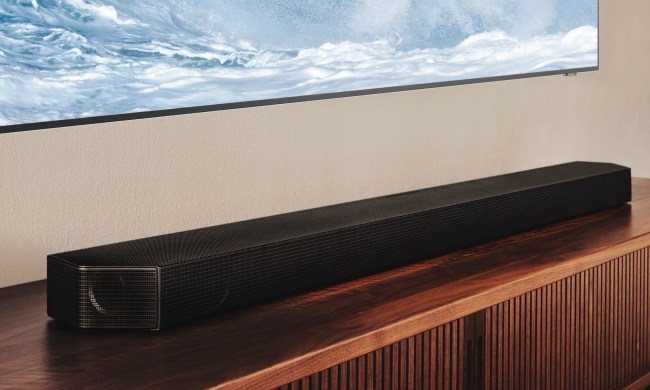- Simple setup
- Amazon Alexa built in
- Impressive low end
- Dolby Atmos and DTS:X support
- No rear speakers
- Several Samsung TV-exclusive features
The race to find the soundbar sweet spot is on. Vizio may have had a head start in recent years, producing soundbars that offer great audio and features for a manageable price. But LG, Samsung, and others are hot on Vizio’s tail.
Samsung’s new HW-Q800T soundbar, a 3.1.2 system with Amazon Alexa built-in, certainly seems like a contender at $750. The proof is in the performance, however, so let’s see what Samsung’s latest is made of.
Design
The Q800T shares similar dimensions with several other soundbars I’ve reviewed in this price range. Its length of 38.6 inches and height of 2.4 inches is very close to both the LG SN7Y and the Sony HT-G700. For whatever reason, that seems to be the agreed upon size for midrange bars.
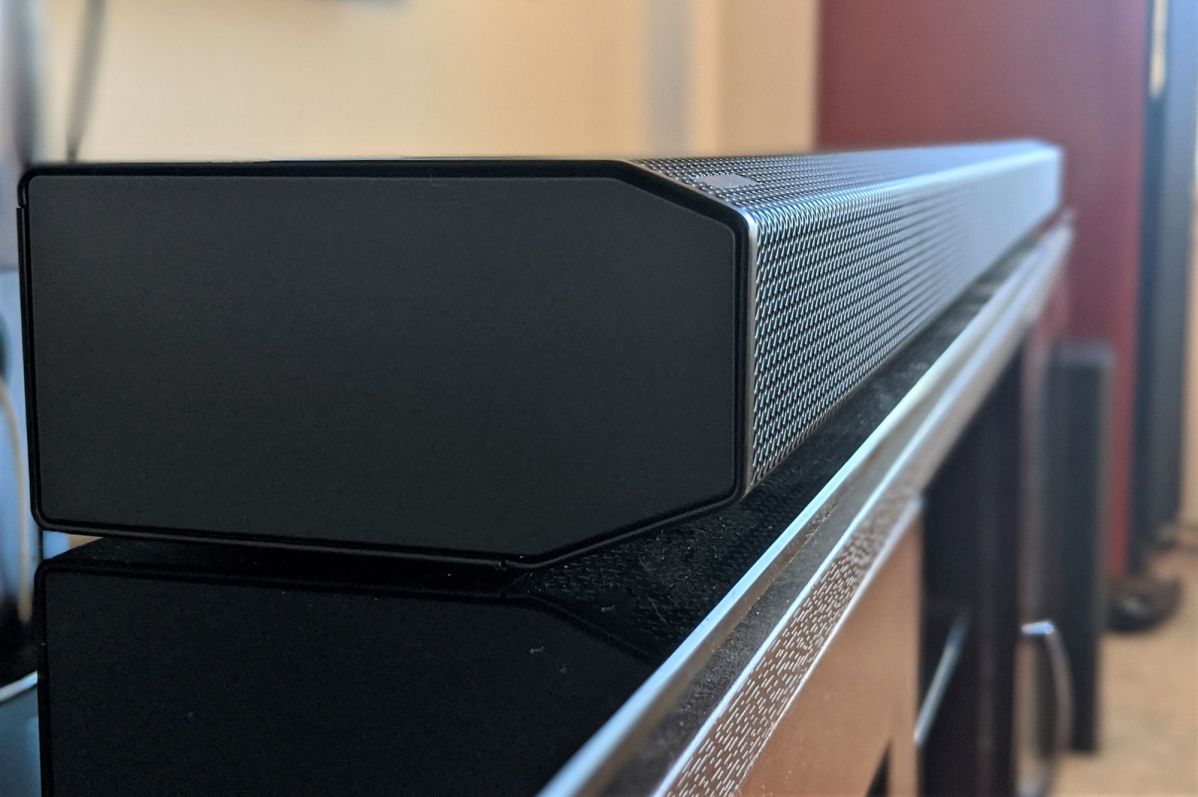
Actually, there is a reason for these long bars — and a good one at that. With Dolby Atmos fully entrenched as the buzzword feature in home audio, these companies are being tasked with adding more drivers into the compact cabinet that is your standard soundbar. The Q800T has drivers representing each channel of the typical left-center-right front soundstage, plus up-firing drivers to provide the height channels of its 3.1.2 setup. So yeah, bars of this size are justified.
The included wireless subwoofer is pretty hefty at 21.6 pounds, easily dwarfing the smaller woofers employed by LG (17 pounds) and Sony (16). Four or five pounds of difference may not sound like a lot, but for reasons I’ll explain later in this review, it’s significant.
There are no rear speakers in this package, though you can buy a $130 pair from Samsung to complete your surround sound setup. As much as I want to be able to let this slide, the traditional theater snob in me needs to point out that $750 of equipment should ideally arrive with rear speakers ready to rock. Granted, you can technically spend more and still get less — the $799 you would spend on a Sonos Arc lands you just the bar (no subwoofer or wireless surround speakers), though that may not be the fairest comparison with all of the features that come with a Sonos product. At the same time, though, you get to spend less and score more from a component standpoint with Vizio’s incredibly capable, $700 5.1.4 soundbar system.
This Samsung unit is far from an eyesore, and should blend in well in most rooms.
Aesthetically speaking, I don’t have a ton to say about the Q800T, and that’s certainly not a bad thing. If you’re an avid reader, you know that my colleagues and I generally operate under a “low profile is a good profile” mantra with soundbars. The Q800T is the epitome of that, a black bar with an accompanying black subwoofer that would only stand out in a room because of their sheer size. I may prefer the sleeker finish of this year’s LG bars, but that’s a matter of personal preference. This Samsung unit is far from an eyesore, and should blend in well in most rooms.
Setup
By now, most soundbar manufacturers have trimmed the fat off the setup process, cutting it down to a rather simple plug-and-play process where literally all you need to do to get up and running is to run power to your bar and sub, then add the connection from your display to your soundbar. In this regard, the Q800T is no different than any similar product I’ve reviewed this year.
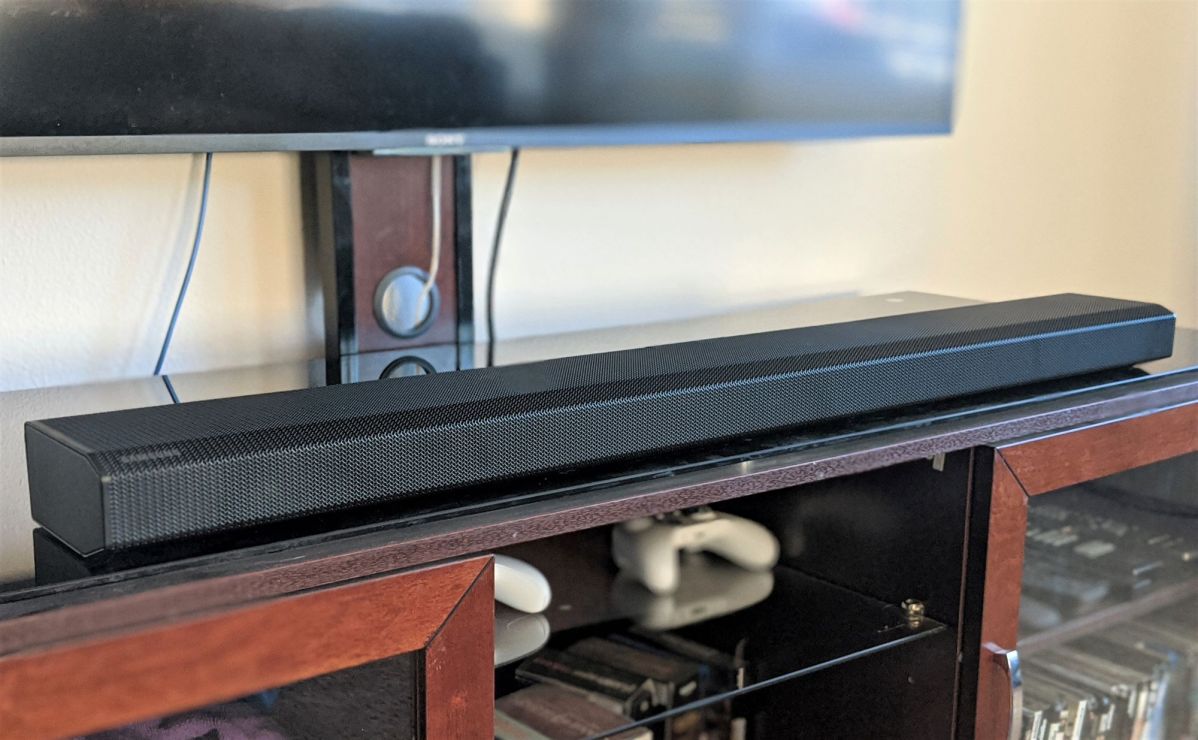
All told, I had the Q800T cranking out the obnoxiously loud theme song from The Office within 10 minutes of opening the box, and it only took so long because I had to be careful with the unboxing of the review unit. I expect the average person, who may not have to worry about maintaining the structural integrity of the packaging, could have their Q800T ready for playback in half that time.
If you wanted to, you could choose to wrap the setup right there. Since this is a network soundbar, though, it’s worth downloading the Samsung SmartThings app on your mobile device and taking the time to connect your bar to Wi-Fi and link your Amazon and Spotify accounts. Even if you don’t yet see the point in putting this soundbar on your network, trust me, it’s worth the additional step.
I will note a small hiccup I had in the setup process, though it was mostly due to user error. I powered the subwoofer on before the soundbar, leaving the sub’s auto-pairing feature aimlessly searching for a soundbar that effectively wasn’t there. Once I added power to the bar, I had to go back and follow Samsung’s instructions to manually pair the sub. The moral of the story here is to get your soundbar up and running before turning the sub on. Hopefully, I make these simple mistakes so you don’t have to.
Connections
Before I discuss the Q800T’s connections, let me acknowledge that I’m about to sound like a broken record, but will continue nonetheless. Like so many bars before it, and likely so many to come, the Q800T does not have a sufficient number of HDMI ports. It’s not something I can officially hold against soundbars at this point, since it’s proven to be common practice in the industry, but you should be getting multiple capable connections when you’re spending this kind of money.
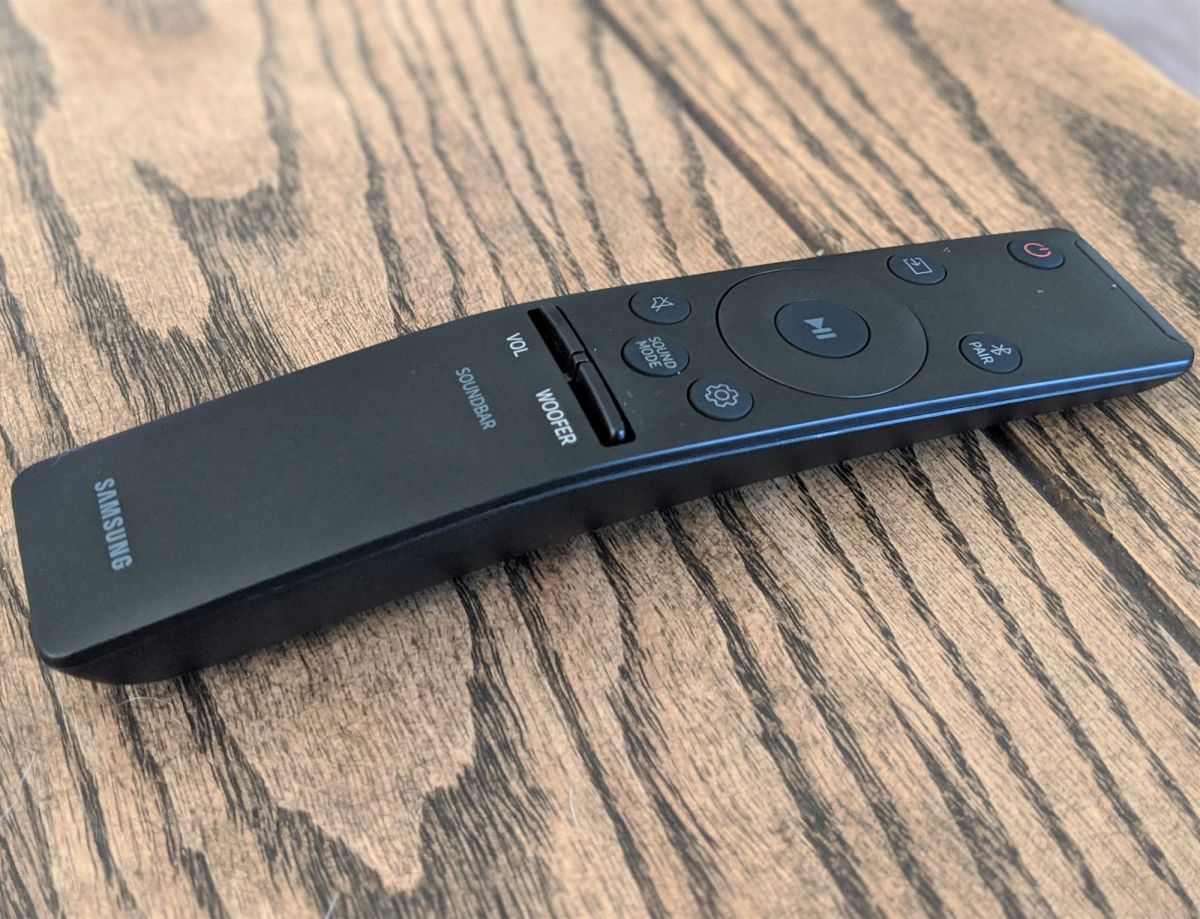
Now that I’ve gotten that mini-rant out of the way, the Q800T has one HDMI input and a corresponding HDMI output, with the bonus of eARC. There’s also a single optical input, which while convenient in some cases, should take a back seat to the HDMI option if possible. Optical will limit the audio format that you’re capable of experiencing, while HDMI will cater to all the 3D sound your ears can handle.
The Q800T has Bluetooth built-in, which can be an easy way to pair your mobile device and stream music. Depending on your situation, however, streaming audio to the bar over Wi-Fi is usually the better bet, eliminating the dropout and quality issues that can plague a Bluetooth connection. The Q800T takes the simplicity of Wi-Fi a step further, thanks to its onboard Amazon Alexa integration. Asking the soundbar to play music was as streamlined as it gets, and the voice assistant seemed decently receptive to my commands even when music was playing from the bar.
Plus, if you happen to be in an environment with other connected smart devices, it can aid your viewing experience as well. I routinely asked my soundbar to turn on the TV, chose a YouTube video to cast to said TV, and adjusted the volume accordingly using another voice command. No remotes were necessary.
Asking the soundbar to play music was as streamlined as it gets, and the voice assistant seemed decently receptive to my commands even when music was playing from the bar.
There are a few connection possibilities that are exclusive to Samsung TVs and mobile devices. You can technically connect the Q800T to a Samsung TV via Wi-Fi, though I’d have to imagine a wired connection would be more reliable. And Samsung mobile devices have an option called Tap Sound, which allows you to tap the top of the soundbar with your device to play whatever content is on it. This sounds like a neat, if somewhat unnecessary perk, and I didn’t have a Samsung device handy to test this out with.
Sound quality
I won’t dance around the lede here: The Q800T sounds very good. That may come across as a simple verdict, but don’t be fooled — there is a lot that went into that five-word conclusion.
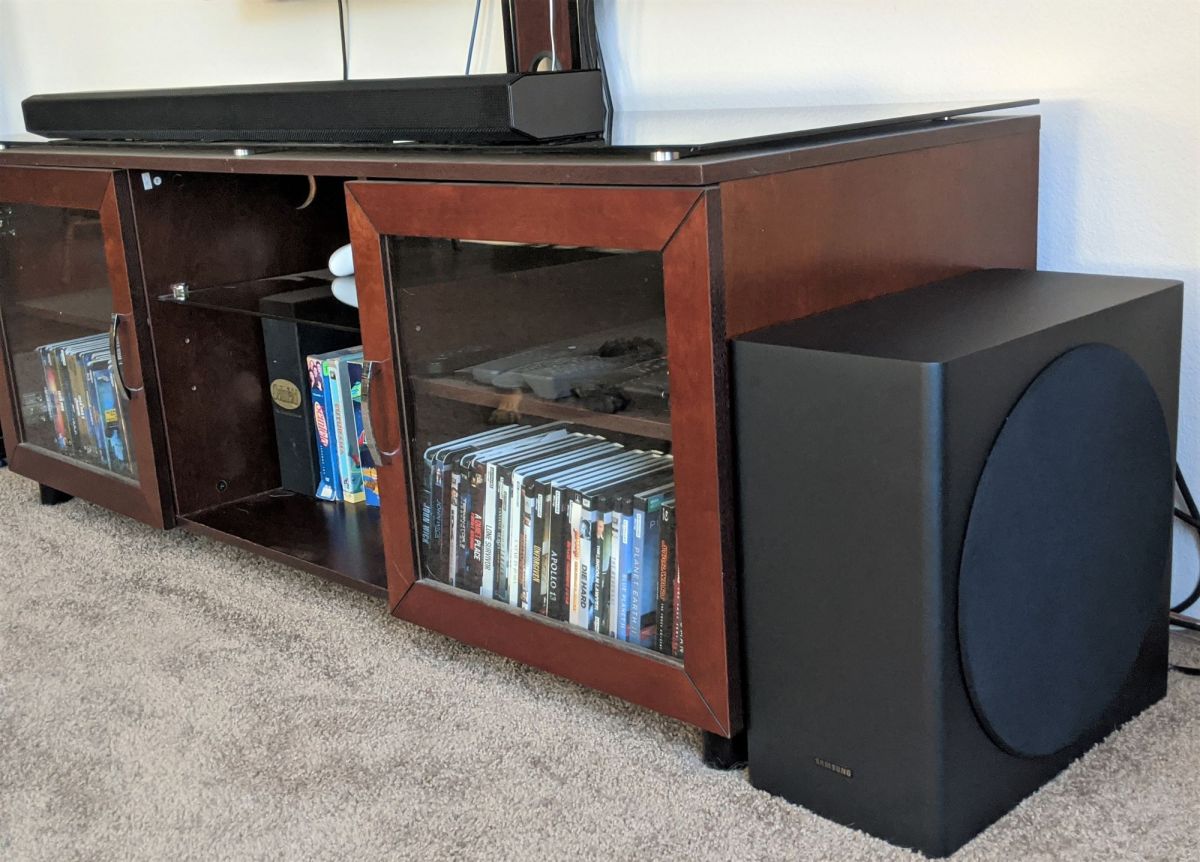
First, it’s important to factor in all the audio features built into this bar. The Q800T has Samsung’s Acoustic Beam technology that the company says mixes sound to make it appear to “come precisely where the action is happening on screen.” That plays nicely in conjunction with the bar’s Dolby Atmos and DTS:X support, not to mention the Q800T’s several different sound modes (Surround Sound Expansion, Game Pro, Standard, and Adaptive). Of those sound modes, by the way, I gravitated toward Adaptive, which Samsung says is meant to optimize the sound for each scene. There were a few movies where I had to scale up the volume for quiet moments with low dialogue, then quickly climb down when louder action was introduced. But for the most part, Adaptive seemed to be the most useful of the modes.
When all these features are tied together, the resulting sound when watching movies and TV is truly stellar. The bar conveyed a wider soundstage than I thought it was capable of, helping to create an experience that falls just short of true surround sound but is still a suitably encompassing effect. The subwoofer nearly stole the show, producing some of the best low end I’ve heard from a soundbar woofer this year. It really added depth to audio in movies like The Lighthouse, where sound plays such an integral part in dictating the tone of the story, as well as a jolting impact to scenes like one from Capone, when a deteriorating mob boss played by Tom Hardy deliriously rattles off rounds from his golden machine gun.
Upon the tragic news of the death of Chadwick Boseman, I queued up some Marvel standouts like Black Panther and Avengers: Endgame to both nurse my grief and test the 3D sound capabilities of the Q800T. I found the audio to be on par with the Atmos sound I experienced on the LG SN7Y, with the edge going to the Q800T since the rest of the drivers in the ensemble (subwoofer especially) helped create a larger, more cinematic sound that the bar’s up-firing speakers added to nicely. I don’t think either the Samsung or LG would be able to compete with properly placed height speakers in a traditional speaker setup, but I’ve been sufficiently sold on the capabilities of these well-executed Atmos bars. And I think most consumers will be, too.
I am confident that this soundbar will provide an exceptional listening experience for most ears.
Music playback was also solid, thanks in part to the soundbar’s support for a wide variety of formats including FLAC, WAV, and ALAC. I believe watching movies with this bar is the more noteworthy experience, but I’d by lying if I said I didn’t enjoy the way Harry Styles’ Watermelon Sugar or Chris Stapleton’s Starting Over sounded on this system. I feel like I tend to be critical of soundbars for their inability to create the stereo separation that’s crucial for music, and while it’s well-documented that I still prefer the classic theater setup, the Q800T sells its stereo sound very well.
With all the available tuning, from adjusting center and height channel levels to an equalizer in the SmartThings app, I am confident that this soundbar will provide an exceptional listening experience for most ears. For me, the missing piece to this puzzle is the lack of rear speakers, which would have completed a convincing cinema experience. Sure, you can spend the extra $130 for the wireless surrounds, and to some that might be worth it. But for this price, I don’t think it would have been inconceivable for Samsung to include rear speakers to elevate what’s already great sound to the tier of excellent. The fact that Vizio did it for $50 less exacerbates that point.
Just like the Samsung-specific connections, the Q800T has an audio feature made to work in harmony with Samsung QLED TVs. Samsung says the Q-Symphony technology is supposed to sync the speakers in the QLED TV with the soundbar speakers to create a “fuller, more immersive,” sound. Unfortunately, I have a Sony TV, meaning I wasn’t able to test this specific feature.
Our take
At $750, the Q800T isn’t cheap, especially when you consider the lack of surround speakers. Even without them, though, Samsung’s new Dolby Atmos soundbar delivers great sound and an abundance of convenience, particularly for those already invested in the brand.
Are there better alternatives?
For $500, you can get a similar 3.1.2 experience in the LG SN7Y, though you’ll be missing out on Wi-Fi capabilities. The Vizio SB36514-G6 is a great option that offers 5.1.4 sound for $700, though it’s a more complicated system to set up and doesn’t quite compare when it comes to the low end.
How long will it last?
Tech-wise, the Q800T is relatively future-proofed with HDMI eARC, 4K and HDR 10+ passthrough, and Dolby Atmos/DTS:X support. A one-year warranty doesn’t hurt, either.
Should you buy it?
Yes. The HW-Q800T has proven to be a great-sounding system that’s easy to set up and use, thanks to the inclusion of features like Wi-Fi and Amazon Alexa integration. It’s on the expensive side, but it won’t disappoint.





